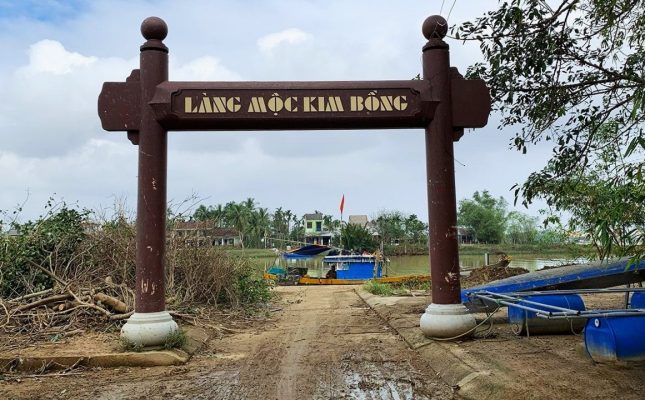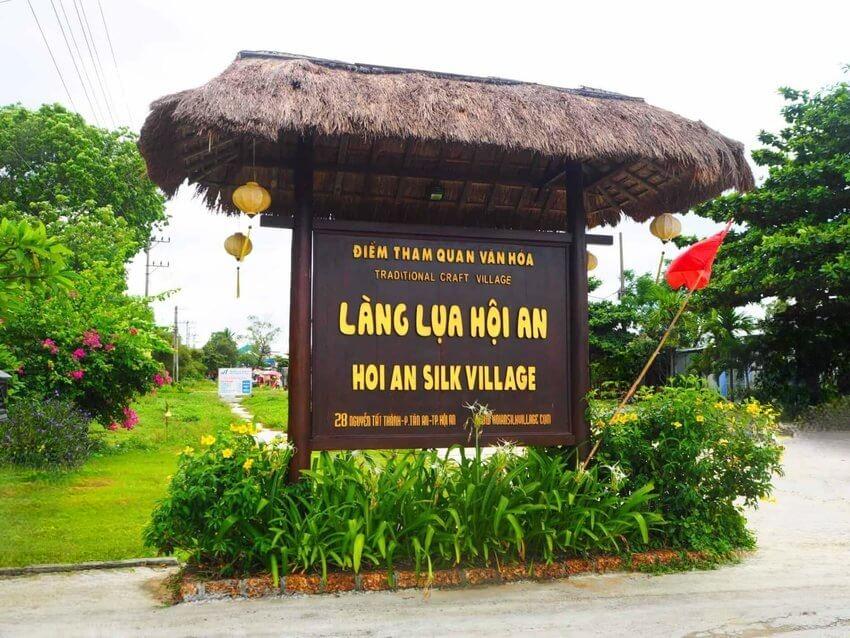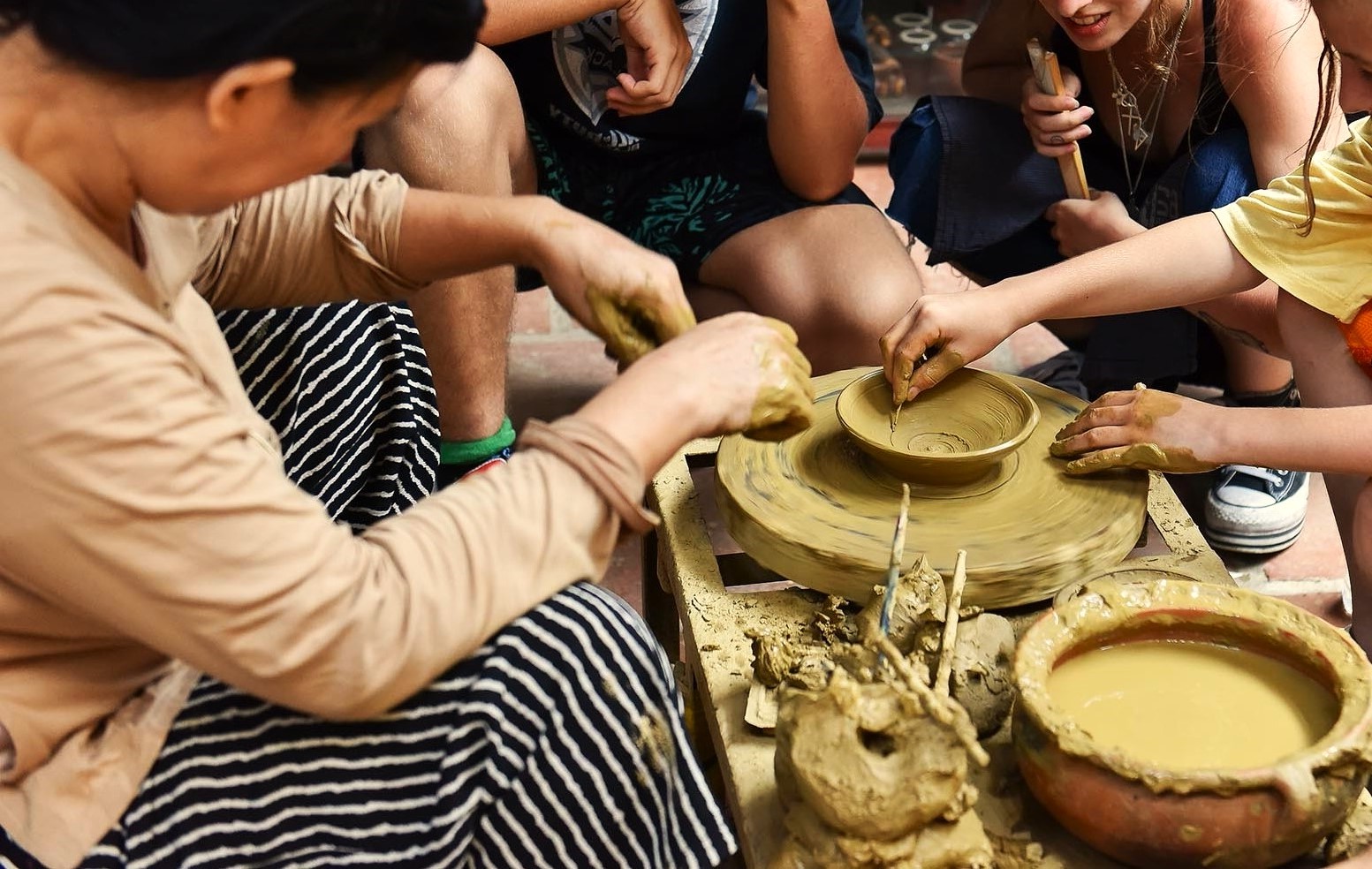1. Introduction to Kim Bong Carpentry Village
Kim Bong Carpentry Village is located on Cam Kim Island, across the Thu Bon River from Hoi An Ancient Town. You can reach the village by ferry, boat, or bridge from Hoi An. The village is about 3 km from Hoi An center and takes about 15 minutes.
Kim Bong Carpentry Village was established in the 15th century. The village developed strongly in the 18th and 19th centuries when Hoi An was a busy trading port and a cultural center. Many foreign merchants and missionaries came to Hoi An and commissioned carpenter Kim Bong to make furniture, boats, and religious statues. The village is known as the “Carpentry Capital of the Central region”. In the 1990s, when Hoi An was recognized by UNESCO as a World Heritage Site.
Today, Kim Bong Carpentry Village is a living museum of carpentry, where you can admire the traditional techniques and tools of carpentry, admire exquisite wooden products, and learn about the culture and history of the village.
The carpentry village is divided into 2 parts with 2 separate professional areas: the western part of the village is a place specializing in making handicrafts with many small products. Meanwhile, the East Village will be the focus of boatyards.

2. What do tourists come to Kim Bong carpentry village for?
You can go to Kim Bong Carpentry Village to explore or join a Hoi An Traditional Craft Village Tour with an English-speaking guide. Some activities and experiences you can do when coming to Kim Bong Carpentry Village:
2.1. Walk or cycle around Kim Bong Carpentry Village
Take a walk or cycle to visit the lives of people in Kim Bong carpentry village. You can explore the village on foot or by bike, and observe the daily activities and customs of the local people. You can see how they make wooden products or make rice paper, fish sauce, noodles, and other traditional foods.

2.2. Witness artisans create wooden products
You can visit the workshops and showrooms of carpenters, watching them carve, sculpt and assemble wooden products. You can see how they used classic tools and methods like chisels, saws, hammers and nails to create intricate and beautiful designs. You can also see the different types of wood they use, such as jackfruit, mahogany, ebony, and rosewood.

2.3. Learn about the process of creating wooden products
At the woodworking workshops inside Kim Bong Carpentry Village, you can openly see all the processes that create a wooden product. Here you can learn about this process firsthand and can have a more objective view of carpentry.
Sawing: Wood is cut into many different shapes and sizes depending on product specifications.
Planing: Wood is smoothed and evened by removing small amounts of material.
Drilled: Perforated wood for joining, tying, or decorating.
Shaping: Wood is formed into the desired shape by carving, sculpting, or bending.
Sanding: Wood is polished and refined by rubbing with an abrasive material.
Finishing: Wood coated with a protective or decorative layer, such as varnish, lacquer, or wax.
2.4. Create your own wood products
You can participate in a hands-on activity where you can try your hand at making your own wooden products. You can choose the type of wood, shape, and style and use the tools and instructions provided. You can also engrave your name or message on your product and take it home as a souvenir.
2.5. Admire wooden products with sophisticated patterns.
You can admire the craftsmanship and diversity of the products, from simple and practical to elaborate and artistic. Products are basic wooden products made by carpenters such as tables and chairs, statues, masks, boats, musical instruments, and toys. You can also see wooden products with intricate patterns such as dragons, phoenixes, flowers, and geometric shapes, reflecting the cultural and religious beliefs of the carpenters.
2.6. Learn about the craft of weaving sleeping mats
In addition, you can also learn about the profession of weaving sleeping mats at this place. You can visit the mat weaving village, part of Kim Bong Carpentry Village, and see how local women weave colorful and durable sleeping mats from sedge grass. You can also join the people in making sleeping mats in this local area.
3. Ticket prices, opening hours, and address of Kim Bong Carpentry Village
Address: Trung Ha Village, Cam Kim Commune, Hoi An City
Opening hours: Free
Entrance ticket: Free
4. Attractions
If you have more time and want to explore more of the rural and cultural attractions near Kim Bong Carpentry Village, you can visit these places:
4.1. Hoi An Silk Village: A traditional village that produces and sells silk products, such as clothes, scarves, bags, and accessories. You can see the process of making silk, from raising silkworms to weaving fabrics, and learn about the history and culture of silk in Vietnam.

4.2. Tra Que Vegetable Village: An organic vegetable farm that supplies fresh and healthy vegetables to Hoi An and nearby areas. You can see the variety of vegetables grown in the village, such as lettuce, basil, mint, coriander, and spinach, and learn about the techniques and methods of organic farming. You can also join a cooking class, where you can pick your own vegetables and learn how to make some delicious Vietnamese dishes, such as spring rolls, pancakes, and salads.

4.3. Thanh Ha Pottery Village: A traditional village that specializes in making pottery products, such as pots, vases, bowls, and cups. You can see the artisans mold, shape, and fire the clay, and learn about the history and culture of pottery in Vietnam. You can also try to make your own pottery products.





